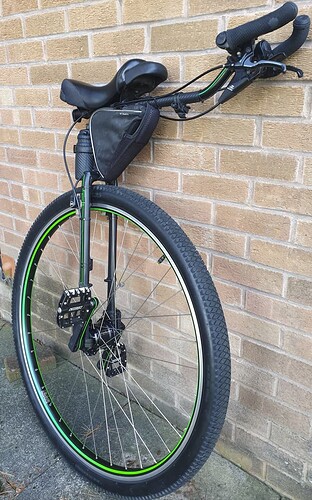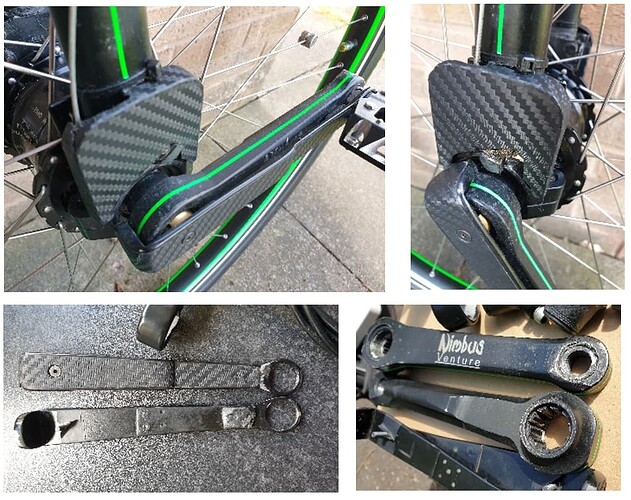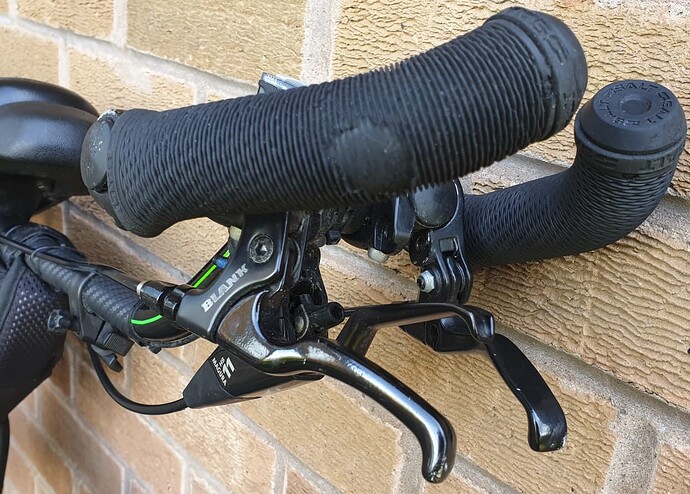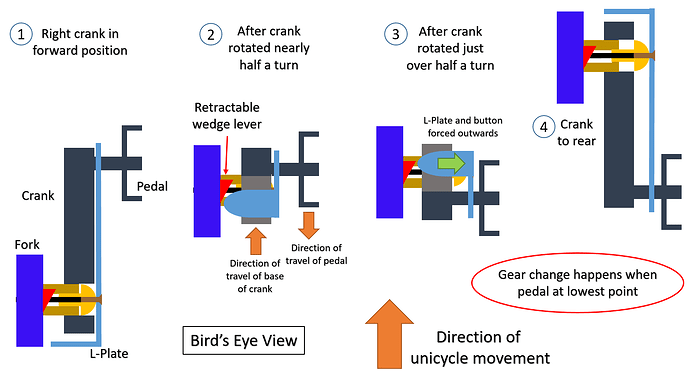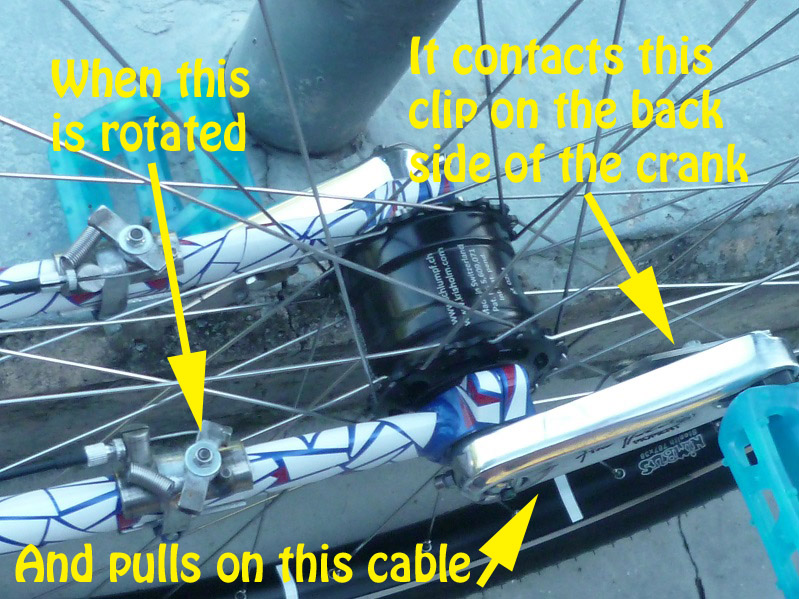Rob Higgins, from Birmingham UK, designed a bar mounted Schlumpf gear change system on his KH36. I never met him, he sadly died in 2019. I bought his uni online from friends who were managing his estate - I was quite new to unicycling at the time and neither they nor I realised what a unique unicycle it was. Sadly the system was worn and no longer robust, and I have since dismantled it, but I wanted to share the design with the unicycling community so people can appreciate Rob’s work and also maybe be inspired to try something similar. Sadly I didn’t take any decent photos, but I’ve included a few that I have.
Rob’s system came in two parts:
-
A plate that ran down the face of each crank (probably inspired by the Schlumpf EZ-Shift levers - eg as seen here), looped around the pedal spindle and one end and screwed into the gear change button near the other end, before bending around the base of the crank and extending towards the wheel.
-
Two ‘black boxes’, one at the base of each fork, connected to two handlebar-mounted brake levers. Squeezing a brake lever would cause a small wedge to protrude from the corresponding black box, so that as the rear of the crank passed that point (when the pedal was at its lowest point), the crank plate would be pushed outwards, thus pulling the gear-change button outwards and changing gear.
The main innovation over the Schlumpf EZ-Shift levers (which extend the button press area to cover the whole crank face) was to bolt the crank plates to the buttons so that they could be pulled outwards as well as pushed inwards. Squeezing a gear-change brake lever indirectly caused this to happen.
Cranks and Push/Pull Plates
These are steel, attaching at one end around the pedal spindle, and at the other end screwed into the gear change button using a new bolt of the same width and thread as the grub screw previously used in the button, which it replaced. I expect the length of the bolt had to be altered to ensure it both secured the plate to the button, and went the exact distance in to secure the button on the shifting rod.
At the axle end the plate protrudes beyond the crank end and bends 90 degrees around the (flattened) crank base. See photos.
The Black Box and gear shift levers
The ‘black boxes’ were mirror images of each other, operated by cables from the handlebars. They were hand crafted with metal shaped as required, and were very well greased! The cable was held in place in a slot and relied on the strength of the crimping of the cable end to keep them attached - I guess Rob knew to squeeze only very gently, but I didn’t… When the cable is pulled, a wedge swivels out beneath the box and this hits the crank plate end as it passes, pulling out the button and changing gear.
The bar end had a central brake lever and a smaller gear-change lever on each side.
Diagram of working principle
Hopefully this gives an idea of how it works - not the most technical of drawings!
Thoughts about generalising the idea
Rob had an older KH36 frame with Magura rim brakes and used 150mm Nimbus Venture cranks. As such he wasn’t dealing with curved crank arms or an external disk brake. The cranks were modified – they were flattened off at the base so that the L shaped extension of the crank plates hugged closer to the crank, and they had cut-outs on the frame side to stop them fouling the frame-mounted ‘black box’. The two gear shift brake levers were attached to a ShadowHandle frame with adapters (cut off MTB bar end extensions I suspect).
It might be possible to use just one side of the system for a uni with an external disk brake. The button on that side could be pushed in by pushing the crank plate with heal or side of foot, then pull out again with the use of the bar mounted brake lever.
Inexpert video
I have some video I took of lockdown me trying to explain the system - but I managed to break it whilst doing so! Also another video when I dismantled it. Not sure if they would be of interest, but if you’re on Facebook then you can see them here (photos and comments - with my video of the system working buried in the comments) and here (the dismantled system).
